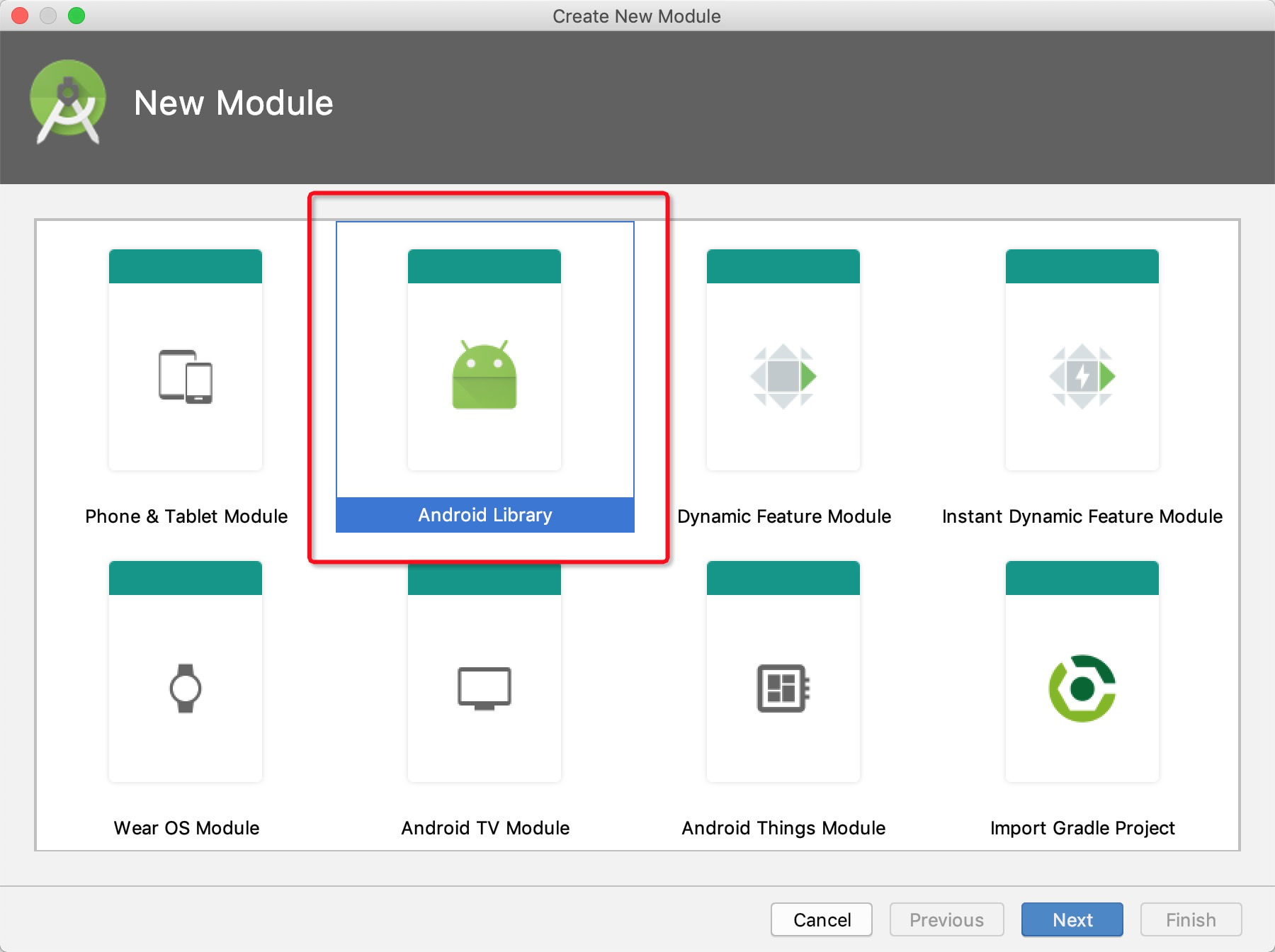This topic describes how to manually integrate the short video SDK for Android or integrate the SDK by using Maven dependencies.
Prerequisites
The development environment is set up. The following table describes the requirements for the development environment.
Environment | Description |
Android version | Android 4.3 or later. |
Java | Java 1.7 or later. |
API LEVEL | Android API level 18 or later. |
Android Studio | Android Studio 2.3 or later. Visit Android Studio to download Android Studio. |
(Recommended) Integrate the SDK by using Maven dependencies
Add the Alibaba Cloud Maven repository.
Add the URL of the Alibaba Cloud Maven repository to the build.gradle file in your project.
allprojects { repositories { maven { url 'https://maven.aliyun.com/nexus/content/repositories/releases/' } } }Add dependencies to the Maven project.
dependencies{ implementation 'com.aliyun.video.android:svideopro:6.15.0' // Required dependency for the short video SDK Professional Edition. implementation 'com.aliyun.video.android:core:1.2.2' // Required dependency for the core library. // AlivcFFmpeg V4.3.0 or later must be used. Select one of the following versions. implementation 'com.aliyun.video.android:AlivcFFmpeg:4.3.6.0-part' // Dedicated dependency for the short video SDK, which has a small package size. implementation 'com.aliyun.video.android:AlivcFFmpeg:4.3.6' // Dependency that is used by both the short video SDK and ApsaraVideo Player SDK. If you want to integrate both the short video SDK and ApsaraVideo Player SDK, use the version provided in this code block. implementation 'com.aliyun.video.android:upload:1.6.6' // Optional dependency for an upload library. implementation 'com.google.code.gson:gson:2.8.0' // Dependency for a third-party library. implementation 'com.squareup.okhttp3:okhttp:3.2.0' // Dependency for a third-party library. implementation 'com.aliyun.dpa:oss-android-sdk:+'// The upload of short videos depends on the upload SDK and Object Storage Service (OSS). }
The short video SDK supports only the armeabi-v7a and arm64-v8a instruction sets. To ensure compatibility with armeabi, copy the .so files in the armeabi-v7a folder to the armeabi folder. The short video SDK is applicable only to Android 4.3 or later, and compatibility for ARMv5 and ARMv6 devices is not required.
Manually integrate the SDK
Step 1: Import AAR packages
Create a module.
In Android Studio, choose File > New > New Module to create a library module. In this example, the library module named AliyunSvideoLibrary is used.

Copy AliyunSdk-RCE.aar, AlivcConan-x.x.x.aar, and AlivcCore.jar from the SDK directory to the created module and add the module to your project.

Add AAR and JAR packages by using Gradle.
dependencies { implementation fileTree(include: ['*.jar','*.aar'], dir: 'libs') }Add the dependency of the AliyunSvideoLibrary module to the app module.
dependencies { implementation project(":AliyunSvideoLibrary") }
Step 2: Import .so files
Copy the jniLibs folder from the decompressed SDK package to the main folder of the app module. Then, declare the path of jniLibs in the build.gradle file of the app module.
The following sample code provides an example:
android { sourceSets.main { jni.srcDirs = [] jniLibs.srcDir "src/main/jniLibs" } }Load the dynamic-link libraries that are required by the SDK.
The dynamic-link libraries are loaded in the latest version of the SDK. You do not need to load the dynamic-link libraries.
The following section describes the library files:
libalivcffmpeg.so-------------Required third-party library for the SDK. libaliresample.so-------------------The library that is required for audio resampling. This library is optional.Add the dependencies that are required to upload short videos.
The upload SDK and OSS are required to upload short videos. If your application does not require this feature, skip this step.
implementation 'com.aliyun.video.android:upload:1.6.4' implementation 'com.google.code.gson:gson:2.8.0' implementation 'com.squareup.okhttp3:okhttp:3.2.0' implementation 'com.aliyun.dpa:oss-android-sdk:+'Initialize the configurations.
Call the onCreate method of the Application class in the app module. The following sample code provides an example:
com.aliyun.vod.common.httpfinal.QupaiHttpFinal.getInstance().initOkHttpFinal();
Add permissions
<uses-permission android:name="android.permission.WRITE_EXTERNAL_STORAGE" />
<uses-permission android:name="android.permission.READ_EXTERNAL_STORAGE" />
<uses-permission android:name="android.permission.CAMERA" />
<uses-permission android:name="android.permission.FLASHLIGHT" />
<uses-permission android:name="android.permission.RECORD_VIDEO" />
<uses-permission android:name="android.permission.RECORD_AUDIO" />
<uses-permission android:name="android.permission.INTERNET" />
<uses-permission android:name="android.permission.ACCESS_NETWORK_STATE" />Permissions need to be dynamically requested in Android 6.0 or later.
Configure the license
After you obtain the license, perform the following steps to configure the license file. For more information about how to obtain licenses, see Obtain and use a license of the short video SDK.
Add com.aliyun.alivc_license.licensekey and com.aliyun.alivc_license.licensefile to the AndroidManifest.xml file. The value of com.aliyun.alivc_license.licensekey is the value of LicenseKey, and the value of com.aliyun.alivc_license.licensefile is the path in which the license file is stored. Sample code:
<application
android:icon="@drawable/icon"
android:label="@string/app_name" >
<meta-data
android:name="com.aliyun.alivc_license.licensekey"
android:value="yourLicenseKey"/> // Enter the value of LicenseKey.
<meta-data
android:name="com.aliyun.alivc_license.licensefile"
android:value="yourLicenseFile"/> // Enter the path in which the license file is stored. Example: assets/alivc_license/AliVideoCert.crt.
...
</application>Configure obfuscation rules
You can configure the obfuscation rules in the proguard-rules.pro file. Sample code:
######################Obfuscation configuration of the short video SDK#########################
-keep class com.aliyun.**{*;}
-keep class com.duanqu.**{*;}
-keep class com.qu.**{*;}
-keep class com.alibaba.**{*;}
-keep class component.alivc.**{*;}
-keep class com.alivc.**{*;}
-keep class org.webrtc.**{*;}
-keep class org.ugsv.**{*;}